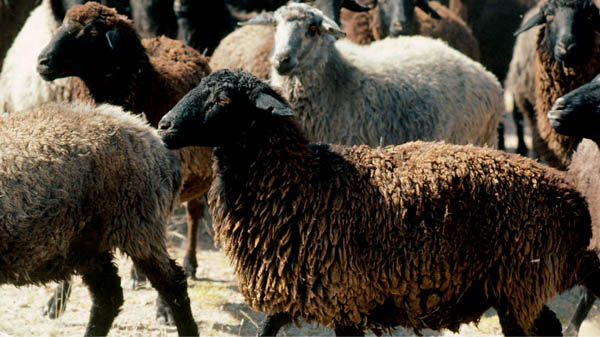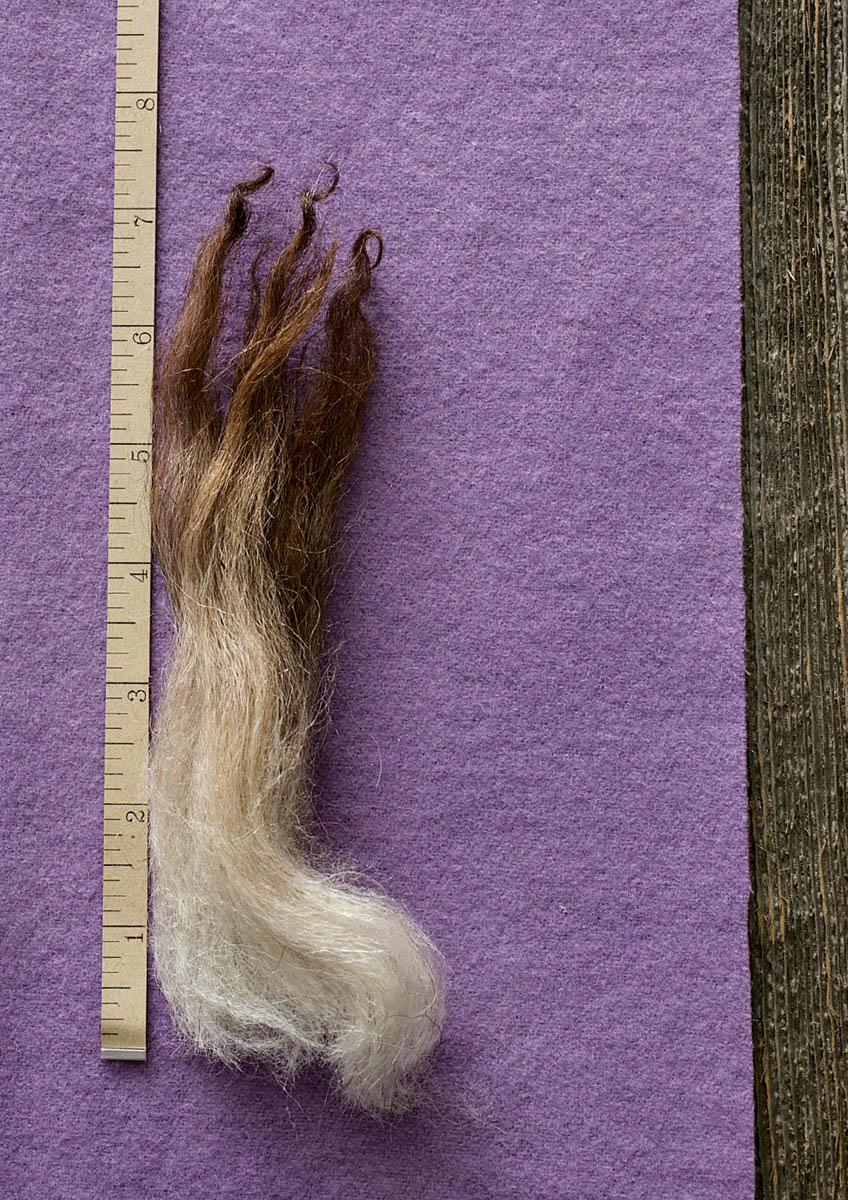
The double-coated Karakul is known for its open, lustrous, relatively grease-free fleeces, which offer intriguing color variations and are fairly easy to spin into fine or thick yarns. The locks have wide bases, gently tapering to the tips, and separate out without undue difficulty. In preparation, you’ll want to decide whether to emphasize the fleece’s texture variations, or to even out the variations by blending. Use peasant combs or flick; card on regular or coarse carding cloth, with hand or drum carders. If you do comb, be careful not to inadvertently separate the coats when you are pulling the fiber off. You can draft to maximize texture, or go for smoothness instead.

Effect of dyes. The fleece accepts dye well, but take underlying natural shades into account.
Best uses. Strong, durable, stable, and eager to felt, Karakul yarns are wonderful to experiment with. Whether you knit, crochet, braid, or weave, your bags, pillows, rugs, or boots will endure hard wear. Karakul is exceptional as the weft in weft-faced textiles, and also makes a good warp yarn.

The central Asian Karakul, from which the American Karakul was developed, is native to one of the cradles of domestication of livestock. It is considered one of the oldest sheep breeds in the world. American Karakuls include genetics from a wide variety of other breeds.